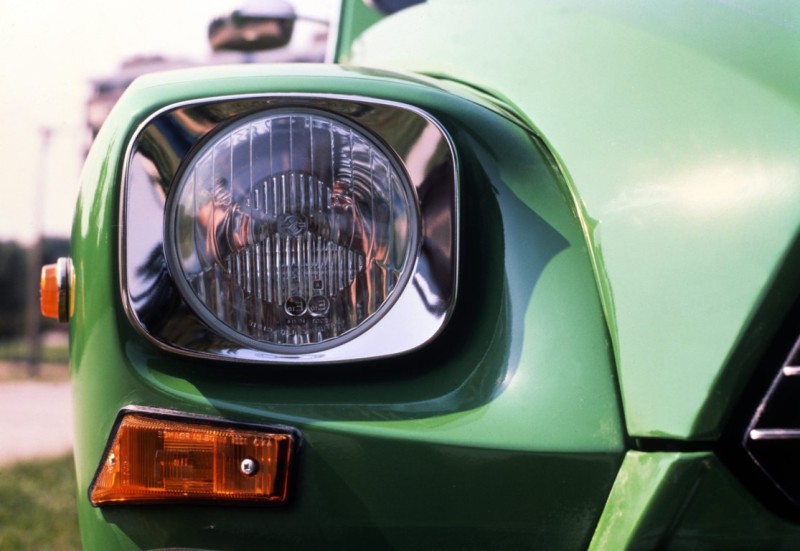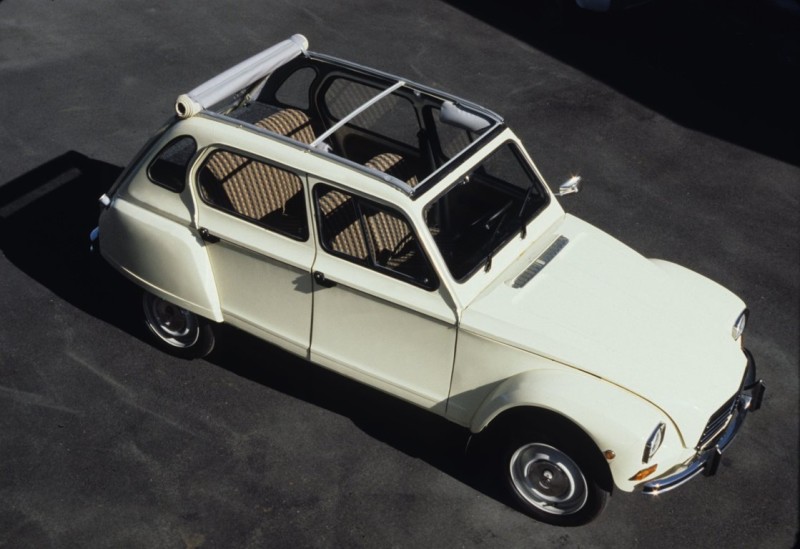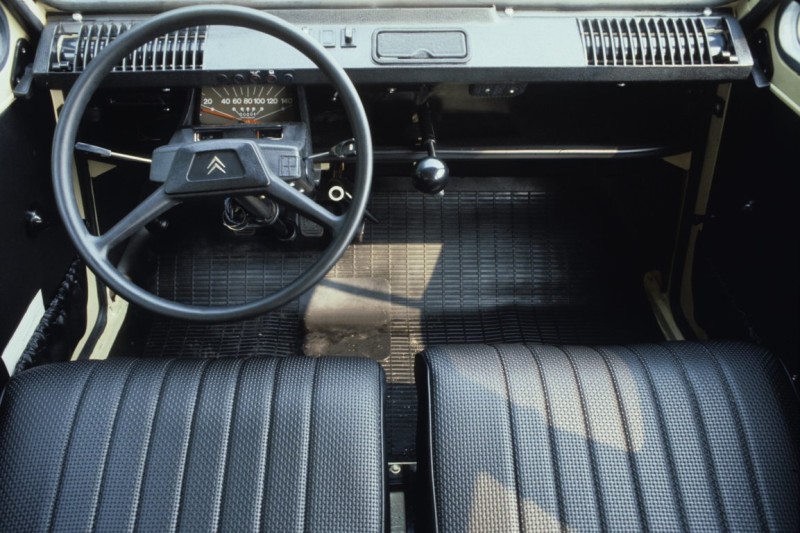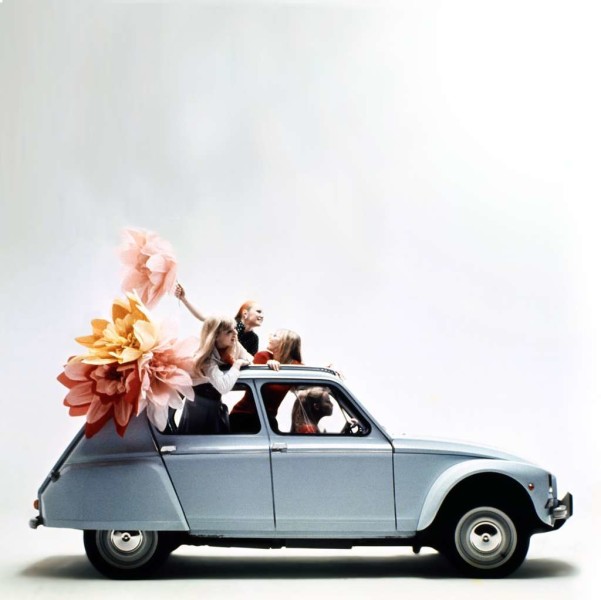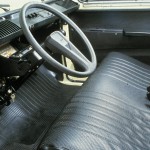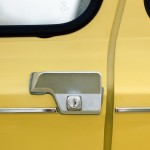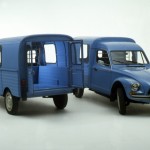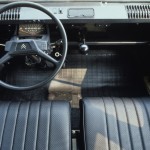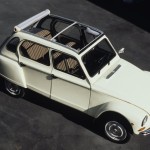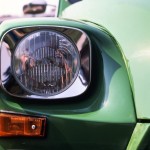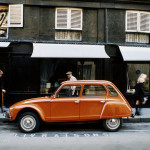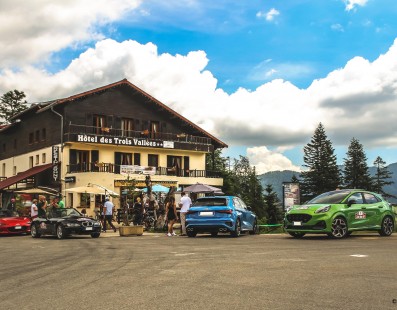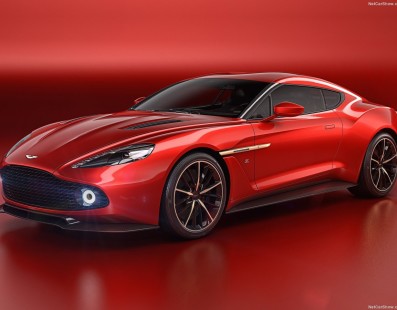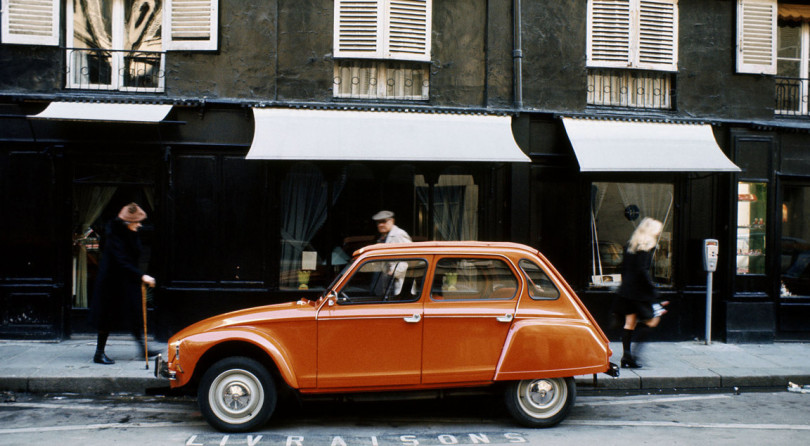
Citroen Dyane: 50 Years And We Still Love It!
CITROEN DYANE
50 YEARS AND WE STILL LOVE IT
Words: Roberto Marrone
Photography: Citroen
The Dyane 6 is 50 years old and certainly, as it was for its sister 2CV that was just about to renew, we talk about a car that looks outside the box and not just for its line – because on these cars everything is different from usual and have to be understood for those qualities that others can’t offer. Result of the pencil of designer Louis Bionier that traced taut and decided lines, the main target was certainly to keep a low price, then very small dimensions and this, sometimes, can go to the expense of habitability, which in the Dyane instead satisfies widely. Performance are obviously not among its objectives, but its behavior on the road, with those oscillations that always seem so close to a rollover that will never happen thanks to the sophisticated system with interconnected suspension, let having fun anyway and allows it to easily cover rough terrain ensuring incredible comfort.
Then there is the fully foldable canvas roof, while for saving money there are no windows levers, but sliding glasses. Instead, you’d have to do some practice with the gear lever, both for its position, both for the selection of the different gears: it’s easy while in a hurry and trying to go from fourth to third, end up taking a turn in neutral (it happened to me!). Even the brakes are very sensible especially on wet or rainy days, just touch them a little more to crash your head in the windshield (of course, we’re talking about times when seat belts weren’t compulsory …). As mentioned the habitability is excellent both at front and back, even if the seats do not seem particularly thick or padded, but after all they’re practical and robust. What about the dashboard? Do not expect to find tachometers or voltmeters, there is only what is needed on a vehicle of this kind.
But back to that day in August 1967, when it was first launched; undoubtedly the line appeared nice and modern, intended for a young audience and in the advertising campaign there were wide references to the music of the era, bright colors accentuated by psychedelic effects and in fact it was a real sales success, going to represent a specific lifestyle. Among the most famous slogans the famous phrase that accompanied her: “Who loves me follow me” or “The car in jeans” (especially in Italy, ed). Citroen was very involved in its promotion, posters carpeted the city to highlight the wide possibilities of use of the Dyane and not only for leisure, because thanks to the large trunk you could load anything with ease and for those who wanted even more space, or a purely commercial vehicle it came the Acadiane, a robust and super-cheap van. But let’s focus on some technical data: the engine was close relative of the air-cooled two-cylinder boxer 425cc of the 2CV. Even on the Dyane, in case of need, there was the possibility to start with a crank thanks to a hole on the front bezel. The first series that was later called Dyane 4, however, had difficulty convincing customers, especially at home, where they continued to prefer the classic 2CV, and so using the mechanics of the Ami 6 (still a two cylinder, but a 602cc) the Dyane 6 was born. The car thus came to touch 120 Kph, imposing itself on the market with greater determination.
SOME MORE INFO ABOUT IT.
The Dyane launched in 1967 was driven by the well-known air-cooled two-cylinder engine that already equipped the 2CV. 425cc displacement and maximum power of 21hp SAE. With the 2CV was also shared front-wheel drive, a solution about to spread like wildfire in the global automotive production. The gearbox was a 4-speed manual, with dry single-disc clutch, but alternatively it was possible to choose a centrifugal clutch.
Unlike the 2CV, also concave sheet metal was used on the Dyane, allowing greater soundproofing, even if more expensive to manufacture. Also the suspensions kept the original scheme with independent wheels on both axles, with longitudinal tie rods, oscillating arms, longitudinal coil springs and friction and inertia shock absorbers. The solution of the longitudinal springs allowed the interaction between the front and rear axle to optimize the behavior of the car. The braking system provided four drums, of which the front ones were positioned inboard, ie at the exit of the differential, while the rear ones were mounted behind the wheel hub. There was no type of servo control for the brakes, as well as for the steering rack.
Already in January 1968 it was time for the Dyane 6 with an engine that developed 28 hp. In March, the version called Dyane 4 was upgraded to 26 hp, while in 1968 the Dyane 6 reached 33 hp. Few the aesthetic differences between the various versions, while another retouch on the power output happened in 1970 (35 hp). In 1978 it was the turn for front disc brakes. Sales were important and it should be kept in mind that the old 2 CV still had its share on the market. The Dyane ceased production in 1983.
At the recent show in Padua we saw the fifty-year-old Dyane and her granddaughter, the new C3 Aircross right next to it, and despite the logical differences in displacement and layout, inevitably occurring over half a century, we could see how many common things there are: modernity, sympathy, color, boldness in design, a model that wants to get out of anonymity, looking for a young and dynamic customer. The story of the “Double Chevron” continues.

